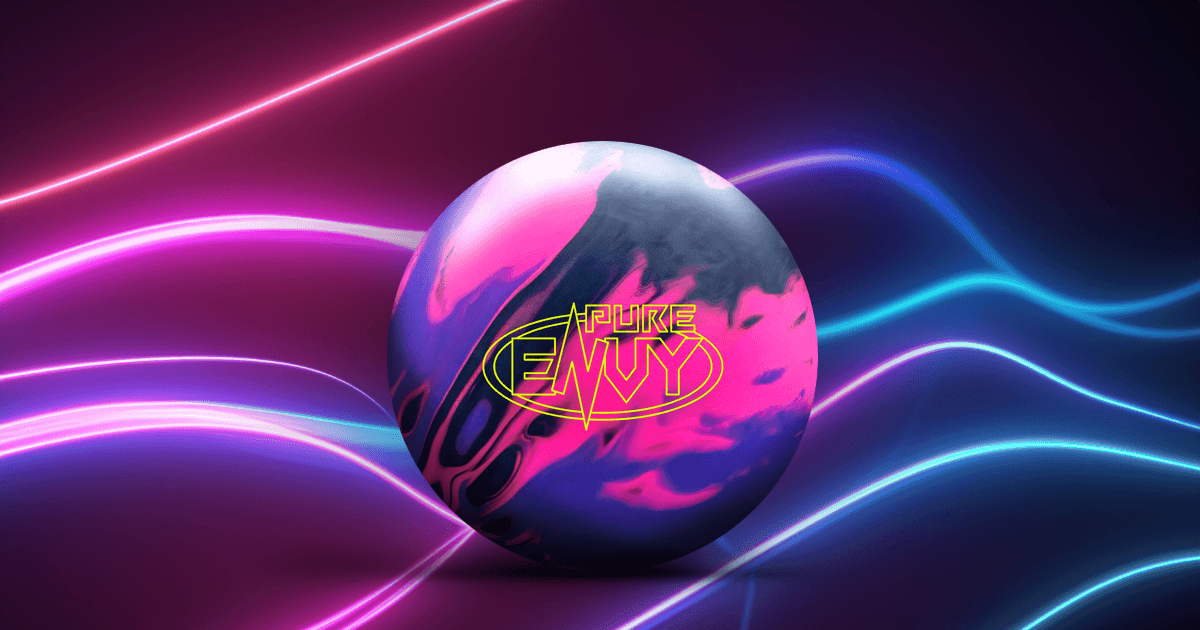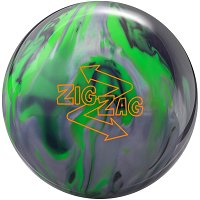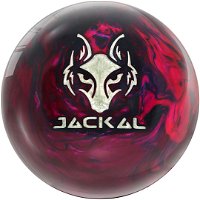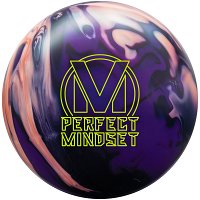Coupon excludes instant bonus items, hot deal items, and gift certificates.
How to Curve a Bowling Ball
Posted Sep 30, 2024 In: Bowling Ball Knowledge | Bowling Balls | Bowling TipsBy Bowling.com
Curving a bowling ball is an essential skill that can take your game to the next level by increasing your strike potential. With the right technique and ball selection, you can achieve a smooth, controlled hook that leads to better pin action.

Bowling 101: Tips to Curve Your Bowling Ball
Many factors go into curving your bowling ball.
Step 1: Starting Position and Approach
Stand relaxed, feet shoulder-width apart, knees slightly bent. As you approach the lane, take 4-5 controlled steps. Your body should be balanced throughout. Keep your eyes on the target (the arrow markers on the lane), which will guide your curve to the pocket.
Step 2: Hand Position and Grip
Proper hand positioning is essential for generating the right amount of spin. Place your middle and ring fingers into the holes, leaving the thumb just barely inside the thumb hole and your index finger on top for stability. The grip should be firm but not too tight, allowing for a smooth release.
Step 3: Wrist Movement
As you start your swing, keep your wrist straight. The key movement is at the release. As the ball gets to the bottom of your swing, rotate your hand slightly inward (counterclockwise for right-handers, clockwise for left-handers). This is what imparts the spin for the ball to curve. Don’t overdo it, or you’ll lose control.
Step 4: Timing Your Release
Timing is everything when curving a ball. Coming off of your backswing, as you release the ball, release your thumb first, let your fingers guide the ball and create the spin, and then release your thumb again to free the fingers to apply the torque. If done right, the ball should glide onto the lane and then hook to the pins. You should be a couple of inches away from the foul line when you release, so your ball has time to generate the spin needed.
BONUS: Use Fingertip Grips
Fingertip grips are inserts that allow you to put only the tips of your fingers (middle and ring) in the ball and still have your thumb in. This grip style helps you generate more spin, which is the best way to create a hook.
Using fingertip grips gives you more control of the ball, especially during release. These grips allow for a looser hold so the ball can roll off your hand smoothly, and you get more revolutions per second (RPM). That’s more spin and a sharper, more controlled curve. Fingertip grips also give you more leverage to snap your fingers at release and get more hook and better pin action.
How to Add Spin to Curve Bowling Balls
The spin of your bowling ball is what’ll make it curve — and it all starts with a flick of your wrist.
Flick Your Wrist
As the ball approaches the release point in your swing, your wrist should be firm but flexible. Spin is created by a quick flick of the wrist as you release the ball. This is a rotation of the hand – for right-handers, rotate counterclockwise, and for left-handers, rotate clockwise. Think of a handshake position, then you simply turn your hand over to the left. The goal is to create a spiral effect as the ball rolls down the lane. Your fingers, especially your middle and ring fingers, are the last to leave the ball and impart the spin for the curve.
Speed and Hand Rotation
The speed of the ball and the amount of spin determine the amount of curve. Too much speed with not enough spin will be a straight shot; too much spin with low speed will be an overcurve.
The difficult part is finding a balance.
Medium to high ball speed with controlled hand rotation will give you a more predictable hook. Hand rotation should be consistent and smooth; jerky or uneven wrist movement will give you unpredictable ball movement and loss of accuracy.
Consistency for a Reliable Hook
Consistency is key to a reliable hook. Whether practicing or in a game, focus on repeating the same wrist flick and hand rotation at the release point. Small variations in your wrist or hand movement can make a big difference in the ball’s movement. You need to develop muscle memory for the exact timing and technique that works for you so you can adjust easily to different lane conditions.
When to Throw a Curve, When to Throw a Straight Ball
Knowing when to throw a curve vs a straight ball is key to taking your bowling to the next level. Each has its own benefits depending on the situation, and knowing when to use each will give you better results on the lane.
When to Throw a Curve
A curve ball is best to increase your strike potential by hitting the pocket — between the 1 and 3 pins for right-handers and the 1 and 2 pins for left-handers. The hook allows the ball to enter the pocket at an angle and gives you more pin action and more strikes. Here are a few times to curve the ball:
- First Shot of a Frame: Most bowlers curve the ball on the first shot because it increases the chances of hitting the pocket and getting a strike.
- Oil Patterns on the Lane: When the bowling lanes are medium to oily, curving the ball helps you avoid the oiliest parts of the lane and creates more traction as the ball hooks.
When to Throw a Straight Ball
A straight ball is what it implies — a direct throw with no curve. A curve is usually preferred for strikes, but there are times when a straight ball is better:
- Picking Up Spares: For single-pin spares, especially the corner spares, a straight ball is often the safest. It minimizes risk and maximizes accuracy so you can target the 10 or 7 pins.
- Dry Lane Conditions: On dry lanes with little-to-no lane oil, curving the ball can over-hook. In these cases, a straight ball will travel more predictable and give you more control.
- Beginners or Less Confident Hook Throwers: If you’re new to bowling or still refining your hook technique, you may find a straight ball gives you more consistency and confidence until you master curving.
Choosing the Right Ball for Curving
The ball you use makes a big difference in how much hook you get and how much control you have over the curve.
Reactive Resin vs. Plastic or Urethane
For curving, reactive resin balls are the best ball. Reactive resin has a sticky surface that grips the lane better, which generates more friction and more spin and hook. Perfect for bowlers who want to get the most curve on medium to oily lanes.
Plastic and urethane balls don’t offer the same level of traction. Oftentimes, a house ball is made of plastic or urethane.
Plastic balls have a smooth surface that’s great for straight shots but limits their hook. Urethane balls are in between; they have more hook potential than plastic but can’t generate as much spin or curve as reactive resin.
For bowlers who want to master curving, investing in a reactive resin ball is key to getting the most out of every shot.
A Heavier Ball Curves More Than a Lighter Ball
The weight of your ball affects both your control and the hook shot you can get. Heavier balls (14-16 pounds) hook more than lighter ones because they carry more momentum through the oil and can create more friction at the backend. But the ball shouldn’t be so heavy it compromises your control or swing.
Surface Finish
The ball’s surface finish—or coverstock—also matters for curving. A polished ball with a smooth surface will skid more down the lane before it hooks, good for drier lane conditions. A ball with a matte or sanded finish creates more friction with the lane and will hook sooner, good for oilier lane conditions.
Strike More, Score Better with a Curve
Learning how to curve your bowling ball can be a game-changing bowling technique if you're an intermediate bowler or a beginner who wants to score better. It requires a combination of things, but with practice, you can pick it up pretty quickly. One training method is to use a tennis ball to practice at home and then take your training to the bowling alley when you're ready to test out your bowling ball curve for real.
Use these bowling tips and expert knowledge to refine your bowling game today!















